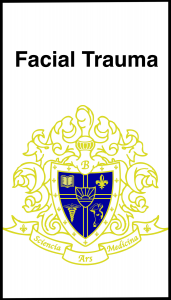
Summary
Dr. Beeson specializes in facial cosmetic surgery, but does do some specialized reconstruction surgery and nasal surgery. Unfortunately, most of this surgery is also considered cosmetic and is not covered by insurance. Dr. Beeson also does not do cases which are in litigation.
Facial scars can be the result of trauma which has resulted in lacerations to the skin, avulsion of tissue and deep abrasions. Typically, injuries to the top part of the skin (papillary dermis) do not scar. However, injuries that go deeper into the reticular dermis do result in scarring. Cuts or lacerations which need to have stitches penetrate through the entire dermis, so they are always going to result in some type of scar formation. In facial plastic–cosmetic surgery, we try to minimize aesthetically unpleasing scars by using special techniques to repair the damaged tissue and special techniques and procedures to “influence” the healing process and maximize the potential for satisfactory healing. It takes 12-18 months for the skin to fully heal. In the early healing phases, it may be possible to use topical creams and lotions, special taping techniques, steroid injections to minimize scar tissue formation, and special laser skin procedures (pulsed dye laser and carbon dioxide laser resurfacing) to help obtain improved results. In some cases, this will provide satisfactory results and no additional treatment is necessary. In other cases, patients may elect to have scar revision surgery.
Cancer reconstruction can be difficult, because tissue has been resected (removed) to take away the cancer and a defect is left which has to “fill in” or be repaired by bringing in tissue from an adjacent area. For this reason, there will always be some type of scar and deformity. Dr. Beeson can only try to “lessen” the deformity and will never be able to completely remove it (which is what we would all like to happen). The healing process can take 12-18 months on average, so frequently things do improve over time. Often there are treatments that can be done during this healing process to help reduce the chance of healing complications and improve the final aesthetic result. That can vary from topical creams, to injections of medication, to treatment with various lasers and dermabrasion. In some case, the deformity is so severe that it has to be totally removed (resected) and the entire reconstruction process done again using different techniques. Sometimes, it can be a very complicated and time-consuming process.
Scar revision surgery is a very complicated, time–consuming, and expensive process. It is important to realize that: (1) in most cases it will be considered cosmetic surgery and will not be covered by insurance, (2) there will always be some scar or deformity present. We can only attempt to obtain improvement, not perfection, and (3) multiple procedures may be required. In most cases, the scar is noticeable and aesthetically unappealing, because it distorts tissues or casts an unfavorable shadow. Using techniques to make a scar narrower, the contour more even, and hiding in normal skin contour lines can result in aesthetic improvement. Typically, there are 7 aspects of the scar that are considered for potential improvement; width of the scar, if the scar is raised, if the scar is depressed, if the scar is a different color from the surrounding tissue, if this scars over 1 cm in length, if the scar is distorting surrounding tissue, and if the scar is not in a relaxed skin tension line (body contour line). In most scar revision surgeries, the old scar is removed and the area totally reconstructed in what is called a complexed multilayer closure. Frequently, the wound edges are supported with a special tape support dressing which is changed weekly for 3-4 weeks. Following the removal of the tape dressing, special creams and lotions are applied daily for the next 2-3 months. Monthly laser treatments (pulsed dye laser) are performed on a monthly basis for the first 3–6 months following the procedure. At 9 months, a light laser resurfacing or dermabrasion procedure may be performed which would require a special dressing and no makeup over the area for 7–10 days. After 12 months from the initial procedure, the results are evaluated and determination is made as to what, if any, additional procedures may be of benefit.
Dr. Beeson feels that it is always best to be treated by the doctor who originally did the surgery as they know your tissues and what they did at the time of surgery. However, when that is not an option, he is happy to evaluate people and provide suggestions and recommendation. There is always the possibility that he will not feel that there can be any additional improvement. The cost for a consultation is $150 and lasts approximately 30-45 minutes. We will take photographs. Dr. Beeson will review with you your concerns, exam you, and then provide you with his personalized recommendations.
Facial Trauma eBook

…………………………………………………………………………………………………………………………………………………………………………………………………………………………………………………………………………………………………………………………………………………………………………………………………………………………
Schedule A Consultation Now!